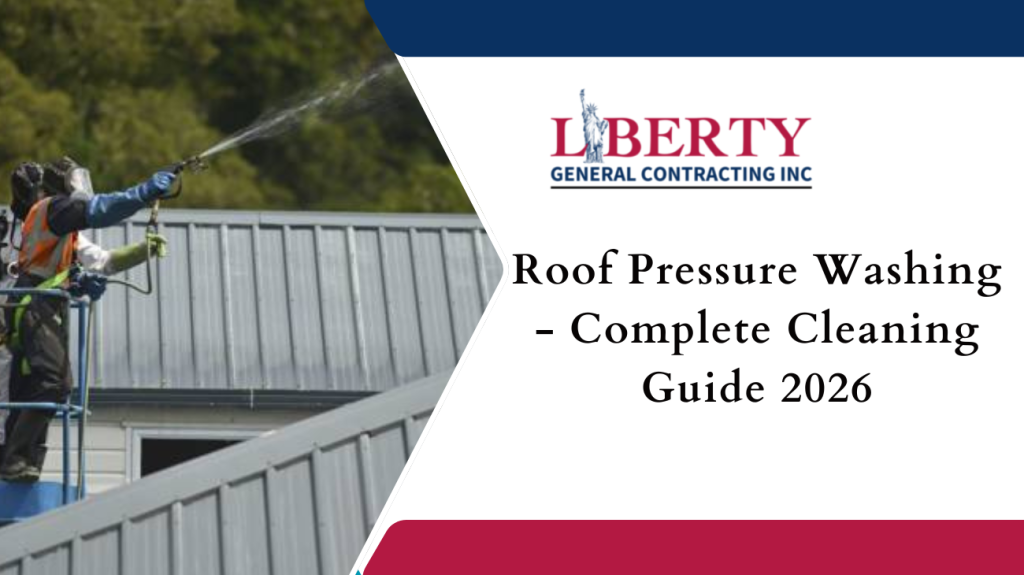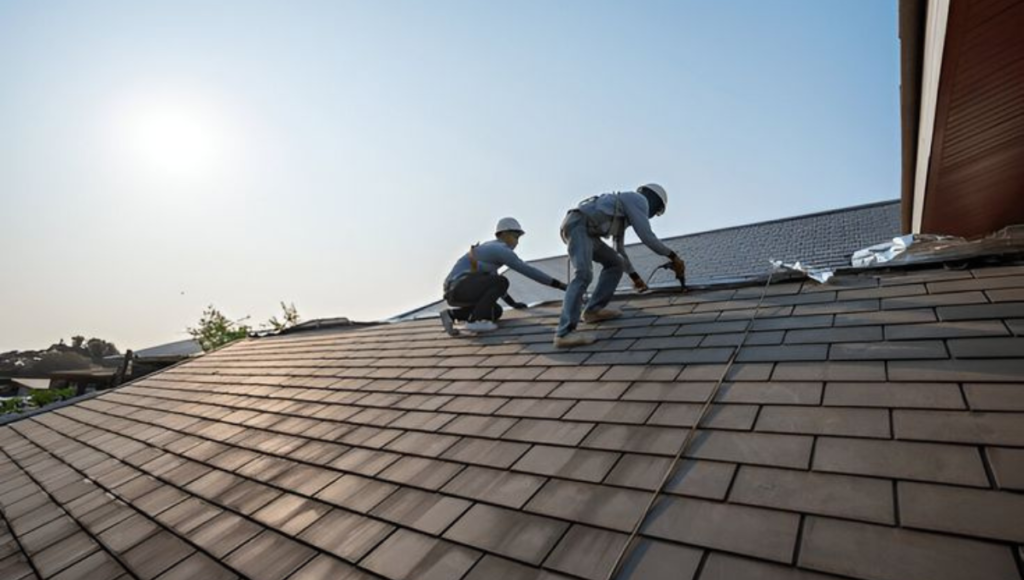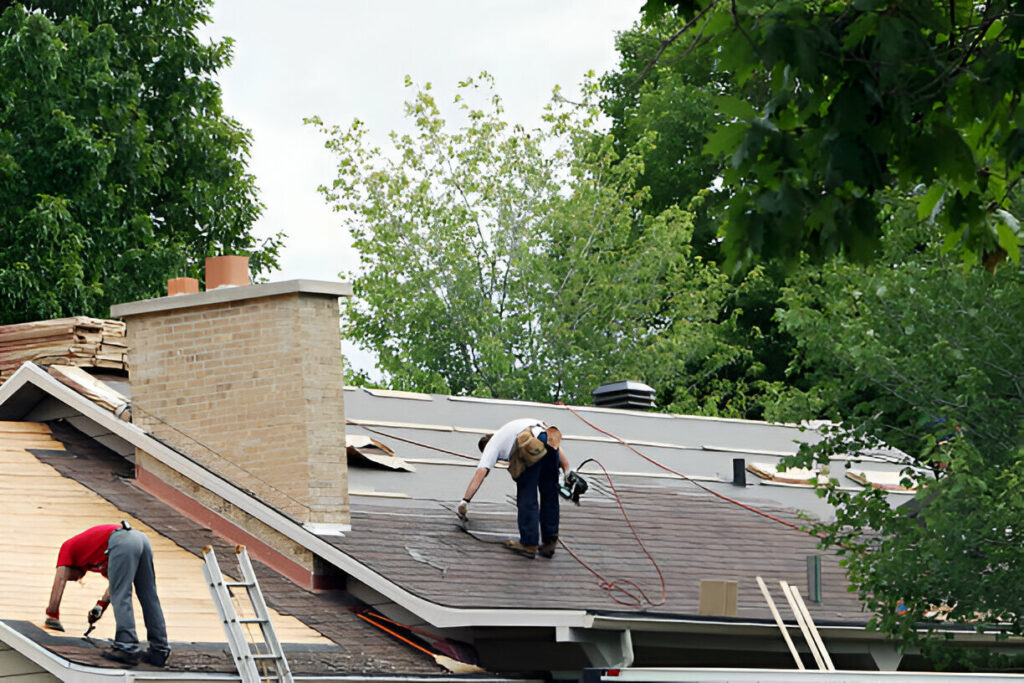Keeping your home’s exterior clean is essential for both beauty and durability — and one important part of this is roof pressure washing. Many homeowners ignore their roofs for years, allowing dirt, algae, moss, mold, and stains to build up. Eventually, this not only affects the appearance of the home but also weakens the roofing material. By cleaning your roof properly with pressure washing, you can increase its lifespan, protect your investment, and maintain your home’s value.
In this complete guide, you will learn what roof pressure washing is, its benefits, safety measures, the right techniques to follow, mistakes to avoid, and whether to handle it yourself or hire professionals. Each point is explained in simple language for easy understanding.
What is Roof Pressure Washing?
Roof pressure washing is the process of cleaning the roof using a pressure washer — a machine that uses high-pressure water spray to remove dirt, debris, mold, moss, algae, and stains. This method is useful for restoring the original look of the roof and improving its condition. It is often used on different roofing materials such as asphalt shingles, metal roofs, tiles, and concrete roofs.
A pressure washer helps in blasting away pollutants that settle over time. However, it is important to use the correct pressure level, because too much pressure can damage the roof tiles or remove protective granules.

Why Roof Pressure Washing is Important
Cleaning a roof may not be something you think about often, but it plays a major role in home maintenance. Here’s why roof pressure washing matters:
Enhances the Home’s Appearance
A clean roof instantly boosts your home’s curb appeal. Roofs collect stains, leaves, molds, and dark streaks over time. Pressure washing removes these stains and makes the roof look new and fresh again. If you plan to sell your home, this increases property value.
Extends Roof Lifespan
Moss, algae, lichens, mold, and dirt hold moisture. If not removed, they can weaken roofing materials. Roof pressure washing eliminates harmful growths and helps extend the life of the roof by several years, saving you from expensive repairs or early replacement.
Prevents Water Damage
A dirty roof can trap moisture, causing cracks, water retention, and eventually leaks. Regular pressure washing keeps the roof dry and prevents water-related structural damage.
Improves Home Hygiene
Algae and moss not only damage roofs but also affect air quality around the house. Pressure washing removes health-harming organisms, making the surrounding environment healthier.
Signs Your Roof Needs Pressure Washing
You don’t need to pressure wash your roof every month. Most roofs only require cleaning once every 1–3 years depending on weather and environmental conditions. Here are signs that show your roof needs cleaning:
- Black streaks or discoloration
- Green patches of moss or algae
- Visible mold or fungus growth
- Excessive dust, leaves, or debris
- Water stains or wet patches that do not dry quickly
- Roof looking old, dull, or unattractive
If you notice these signs, scheduling a roof pressure washing service will help restore the roof’s condition.
Types of Roof Pressure Washing Methods
It is important to choose the right washing method depending on roof type and dirt severity. There are mainly three methods:
1. Soft Washing
Soft washing uses low-pressure water combined with cleaning chemicals. It is ideal for delicate roofing materials such as asphalt shingles. Soft washing is recommended because it prevents damage while still effectively removing mold, algae, and stains.
2. High-Pressure Washing
This uses strong water pressure to blast off tough dirt. It is suitable for durable roof materials like metal or concrete roofs, but it should be done with caution. Not recommended for shingle roofs as it can remove protective granules.
3. Eco-Friendly Chemical Treatment
This method uses environmentally safe cleaning solutions that break down algae and moss. It is followed by a gentle rinse. This is good for people who want a chemical-based cleaning but still care about environmental safety.
Step-by-Step Guide: How Roof Pressure Washing is Done
Below is the proper procedure to carry out roof pressure washing safely and effectively:
Step 1: Roof Inspection
Before starting, inspect the roof to check for cracks, damage, loose shingles, or weak areas. Pressure washing must not be done on already damaged roofs.
Step 2: Prepare the Area
Cover all nearby plants, windows, and walls to protect them from water and chemicals. Close all doors and ensure no electrical wires are exposed.
Step 3: Apply Cleaning Solution
Spray a roof-safe cleaning solution on the surface to break down dirt, algae, moss, and stains. Let it sit for 10–20 minutes.
Step 4: Pressure Washing
Use the recommended pressure setting depending on roof material:
| Roof Material | Suggested Pressure Level |
| Asphalt Shingles | 100–1500 PSI (Soft wash only) |
| Metal Roof | 1500–2500 PSI |
| Concrete Tiles | 2000–3000 PSI |
| Clay Tiles | Soft wash only |
Spray from the top downward to avoid pushing water under the roof layers.
Step 5: Rinse and Final Check
Rinse the roof thoroughly and inspect for missed spots. Remove any remaining dirt manually if required.
Safety Tips for Roof Pressure Washing
Roof pressure washing involves risks. Follow these safety tips:
- Wear slip-resistant shoes and protective gloves.
- Use a stable ladder and safety harness.
- Do not use excessive pressure on fragile roofing materials.
- Never pressure wash during rain, snow, or strong winds.
- Turn off electricity near the working area.
- If unsure, call a professional service.
Common Mistakes to Avoid
Avoid these mistakes to ensure safe and effective roof cleaning:
- Using too high pressure on shingles
- Not protecting plants and property from chemicals
- Washing the roof upwards instead of downwards
- Standing on slippery, wet surfaces without safety gear
- Using household detergents not meant for roofs
DIY vs Professional Roof Pressure Washing
| Feature | DIY Cleaning | Professional Service |
| Cost | Cheaper but risky | More expensive but safe |
| Experience Needed | High | Low for you |
| Tools Required | Must rent/buy | Provided by company |
| Roof Safety | Not guaranteed | Fully insured and safe |
If you lack experience, hiring professionals is safer. They know the correct method for different roofing materials and prevent damage.
How Often Should You Do Roof Pressure Washing?
On average, once every 1–2 years is recommended. Homes in areas with high humidity, rain, trees, or pollution may need more frequent cleaning.
If your roof becomes dirty quickly due to weather or surrounding environment, cleaning once a year is beneficial.
Benefits of Hiring Professional Roof Pressure Washing Services
Hiring experts offers several advantages:
- Safe cleaning without risk of damage
- Saves time and effort
- Professional equipment and techniques
- Long-lasting cleaning results
- Roof inspection included
Final Thoughts
Roof pressure washing is an essential part of exterior home maintenance. It not only makes your home look clean and visually appealing but also protects your roof from long-term damage. By removing moss, algae, dirt, and stains regularly, you improve the roof’s lifespan and prevent costly repairs.
Whether you choose DIY or hire professionals, make sure the job is done safely, using the right method for your roof type. Regular roof pressure washing keeps your home strong, clean, and healthy — and maintains the beauty and value of your property.
Contact Liberty GCNY
Website: www.libertygcny.com
Phone: (347) 682-9840
Serving: Manhattan, Brooklyn, Queens, The Bronx, Westchester County, and Long Island.
Address: 251 N Regent St, Port Chester, NY 10573, United States


